
Interview with Phil Myers, CTO, Lawo
Lawo is an undisputed market leader and innovator in the worlds of broadcast and media production. Helming the next phase of product development is CTO Phil Myers.
Interview:/ Christopher Holder
Fifty years ago engineer Peter Lawo developed an obscure electronic instrument called the Halaphon and after experimenting with other unrelated projects launched successful audio mixing products, principally for the broadcast market. In recent years Lawo is recognised as a market leader in networked audio and video systems. Lawo’s IP equipment can be found the world over including at the heart of NEP’s groundbreaking broadcast hubs in Melbourne and Sydney.
AV: Remote production has kept the wheels on events during Covid. Is what we seeing a glimpse into a future we didn’t entirely see coming or just an acceleration of the inevitable?
Phil Myers: When I joined Lawo in 2018 we clearly identified a number of areas where we saw the industry moving. One of those trends was towards remote production. But we felt that at the time, our large-scale investment in production technology remained the biggest priority. But certainly remote production was building and getting more traction as people were looking to connect venues or infrastructure, maybe for large events or to deal with disaster recovery and the like.
Now, in the last 18 months, we’ve seen a lot of people forced to change the way they work in order to keep their business going and still make the content available. I don’t see this as a radical shift in the way we work but Covid has accelerated the process. I think we’ve seen a five- or seven-year evolution compressed into a three- to five-year period.
But it does bring challenges. One of the biggest is around security. When content is stored inside your facility or inside of your production area, you have pretty tight control over it. But obviously, when you have to traverse remote connectivity, there are concerns of not only the reliability of the content, but more importantly, the security of it, especially with premium content, which is going to a subscription service, for example.

APPROACH TO IP
AV: At the core of remote production is the movement of media over IP networks. Can you give us a sense of how Lawo has been moving in that direction over recent years?
Phil Myers: If you look back to 2009 or 2010 Lawo was already making steady IP audio progress with Ravenna. Then in late 2015 into 2016 customers started acquiring the appetite for video on the IP layer as well as audio. When I joined in 2018, my focus was on devising an IP solution that wouldn’t require a degree in rocket science to build it. Operators need to use the system not IT engineers. It needs to be as easy as possible to maximise the use of the technology, and not be completely swamped by the technology.
We’ve worked very hard on ease of use over the last few years. In April of this year we introduced something called Home. It’s now a core technology across the Lawo portfolio, with our audio production products the first to benefit. It allows operators to easily discover, connect to and use Lawo hardware on the network, regardless of whether it’s sitting next to them or thousands of miles away.
Adopting IP into products was just the first step. Now we’re going to start seeing real innovation in how we allow operators to utilise the technology in a far more efficient way.
MORE ON IP
AV: We’re making IP infrastructure work and work well, but how inherently suitable is the IP layer for moving audio and video around?
Phil Myers: With IP media transport we come back to the same constraints: whether it’s audio or video, we have a really low tolerance to latency — whether you’re matching audio with video or you’re trying to listen to a return and you don’t really want to have seconds of delay. If we look at video, the network infrastructure simply hasn’t been there to transport large payloads of video. So you were always forced to compress it and compression results in latency. If you look back to around 2015 or 2016, that was a real tipping point. We started to see larger networks becoming available. Since that time, we’re seeing 25, 50 and 100 gig networks, in fact, we’re now talking about 400 gig. So the IP infrastructure, or the pipes that we move this stuff on, is more than capable of transporting uncompressed video, even though we’re still increasing the amount of bandwidth we need, thanks to 4K and a future involving 8K.


SYD MEL. NEP REMOTE
AV: Not so long ago NEP built two hubs in Melbourne and Sydney. These were hailed as breaking new ground, worldwide. Can you explain why it was so significant?
Phil Myers: NEP routinely deals with such vast distances in Australia. Historically, you would fly a production crew hundreds of kilometres to the venue; drive the OB truck for days; and potentially drive it just as far again to another job straight after the event. With all that time and expense of moving the equipment and the personnel, there comes a time when you ask, ‘why don’t we just back haul the signals to a central position?’.
The remote production model in many cases is a better utilisation of your technology and people. It allows you to use the talent where they’re based — Sydney and Melbourne, in this case. So in that way it was really groundbreaking. Not only was it one of the very first large-scale SMPTE 2110 installations, but it showed people that you can work remotely; it’s possible to backhaul signals; and it’s also possible for crews to work remotely together in a collaborative way.
In the last 18 months, many customers have looked closely at the NEP model because it provides a blueprint. In fact, we’ve now seen some customers go one step further where they take the replay controllers or the audio console and put them in operator’s houses. The replay operator or the audio operator doesn’t necessarily even have to go to the facility!
RIP OB TRUCKS?
AV: If operators barely need to get out bed to produce a show, are the days of OB trucks now numbered?
Phil Myers: An OB truck’s life expectancy is around five to seven years. There are plenty on the road and most of them aren’t IP based. So OB trucks aren’t going away anytime soon. What’s more, some customers will still want the trucks to be at the venue, even if they are IP based. Some directors insist on being on site because of the atmosphere and they believe it rubs off on the production. But when you think about a large sporting event where there are multiple trucks, multiple broadcasters, providing all the world feeds, in that circumstance you might find the world feeds get back-hauled to the broadcaster rather than the broadcaster sending a truck to the event itself.
Everyone will feel their way in a manner that best suits them. Some people will really embrace remote production — send the cameras to the event and back haul everything. Some customers might decide to send the cameras and take a small crew and then do some of the replays back at base. And then we will have some customers continue to take the entire truck and do the production that way.
“”
We wanted to utilise technology built for scale, built for security, built for resilience. And that was really important to us

HOME ECOSYSTEM
AV: You mentioned Home. Can you elaborate on what you set out to do with it?
Phil Myers: We started the Home project in 2018. I gave the engineering team a very clear goal: to build a platform upon which we would add future Lawo products and technologies; and a scaffold that would allow customers to build an IP system without all of the complexity.
My challenge to the team was: if I have a bundle of our ‘box’ products, how quickly can I take them out of the box, connect them to a switch and have them routing audio and video through the system. After all, that’s the customer expectation: take a box, rack it, cable to the switch, and turn on the services.
Home is also built to make it easy to manage an IP-based system. Our products are now reprogrammable, are regularly updated, and all have user licenses. You need to be able to manage and track user licences. And so we wanted to provide a mechanism that allowed customers to manage all of that themselves. It can save them the time it takes to phone us to upgrade the system safely or move their licences around.
AV: That’s the customer’s experience of Cloud, but what were you doing under the bonnet?
Phil Myers: From a technology perspective, I wanted the team to build something that is good for today, but also good for the future. And so it’s built entirely in microservices where each element is, effectively, its own service. This means that when we want to modify, update or repair any service, we don’t have to tear down any of the others or do regression testing to any of the others — it’s more flexible and agile.
The other side of that is Home can run anywhere. So today we run the microservices on a gate server inside the console. If it’s a standalone console, that’s really easy to do. Or we can run it in a cluster using Docker or Kubernetes, or we have customers that want to run it in a hosted environment. So you can use Microsoft as your containers, or AWS.
Customers are going to run the services where they want to run them and it’s not up to us to dictate that. And, with services decoupled, you can even choose to run some services in one location and some services in another — again, it’s highly flexible and agile.
When we looked at other open standards we couldn’t see how they were benefiting from some of the developments happening outside the entertainment space. And so all the technology we have in Home is built on open source technologies that you will find predominantly in the cloud environment — cloud native technologies. We didn’t want to build any proprietary technologies. We wanted to utilise technology built for scale, built for security, built for resilience. And that was really important to us.
AV: Being based on open standards are you leaving the door open for others to play in your Home?
Phil Myers: Yes. The second side of it is the ecosystem piece: how do we allow others to play in the Home environment? We’ve already made some advances and some progress with a number of the other manufacturers to implement the technology in the Home environment. And we have some announcements coming early next year about adding support for NMOS within Home. You can either be a complete first-class citizen, a Home native, or you can bring all of your NMOS devices directly into the system.
I suspect we will implement other discovery mechanisms in the future, given the industry’s appetite for other technologies like Dante and NDI, just to name a few. And because of the architecture of Home it’s not too hard for us to build an NDI service or a Dante Service to complement the NMOS service.
It’s really about having the ability and a common user interface that allows you to see, discover and manage all of your content securely, no matter which way it’s transported or discovered at a technology level.

AI: USEFUL?
AV: I’ve heard you talk about Lawo’s research into the application of AI in your products. Any more developments?
Phil Myers: I’m always a big fan of of looking at how a technology can fix customer’s problems. It’s not enough to latch onto a buzzword, ultimately, it’s got to provide a material benefit. So we’ve looked at AI in a couple of spaces.
The first is in audio applications: how AI can assist in auto mixing and control of audio signals coming in.
The other one is around pathfinding: looking at the network and understanding how you can move signal around the network.
Our Kick product is an interesting one where we use the tracking data from around the football pitch to intelligently bring up the pitch mic levels. I think that concept ,with some additional work, actually provides us a good foundation.
You will see some new things in this space next year. It’s a little too soon to announce anything but certainly I would expect by the middle of next year you’ll see something.
AV: You mentioned pathfinding. Is that a fertile area for AI?
Phil Myers: No. We feel it’s better to go with a more traditional algorithmic approach, because there are some operational concerns, where things might move around the network by themselves, in a way that’s undesirable. It’s really comes down to identifying the problem areas and seeing what is the best technology to fix that problem.

BECOMING IP & IT
AV: Do you hear concerns expressed around audio and video systems being run by IT people rather than audio and video people?
Phil Myers: Will IT engineers replace the broadcast engineers or the audio engineers? No, an IT engineer is very good at understanding the IT infrastructure but in most cases, they won’t have any concept of how to look at video or measure it or monitor it or listen to it. What I see with the large broadcast clients, is they are bringing the engineering resources together and they’re trying to pass the skills back and forth. It means you end up with a hybrid combination of skills. You have IT engineers with an understanding of video, and you end up with audio and video engineers with an understanding of IT.
That’s one of the reasons why we developed Home, because we don’t want highly-skilled audio and video engineers being burdened with a load of IT detail to get something to work.
Having an understanding of IT is definitely beneficial. And I think you’re probably going to see that with a lot of customers, and how they hire. They’re going to ask for a basic level of networking knowledge.
LAWO IN A VENUE NEAR YOU
AV: I’ve noticed Lawo audio consoles popping up in larger installations. Is Lawo interested in expanding its house of worship and theatre market share, for example?
Phil Myers: We are and the new MC2 36 Mk2 audio console bears witness to that. What we call the ‘application’ segment is much more sensitive to price and complexity. So we’re starting to produce products for that space. We have been focussed on the premium end of the market, but we are also building the product portfolio to scale it down to make that top-end technology more accessible. We’ve got some new products coming along for our radio portfolio at the end of this year, which will also allow us to use some of that technology for those segments as well.

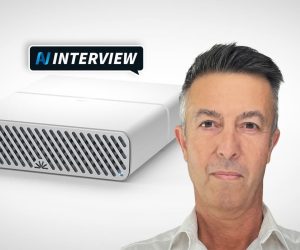
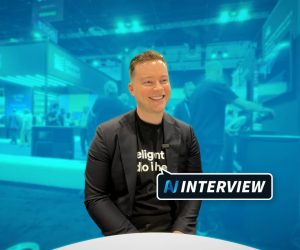
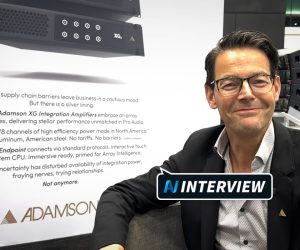
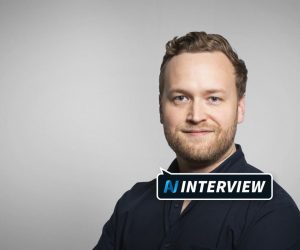
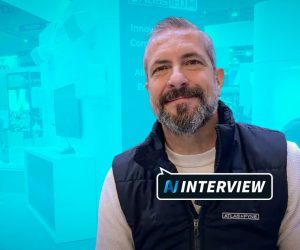
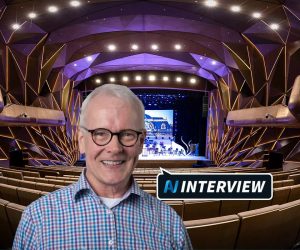
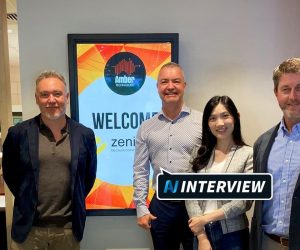
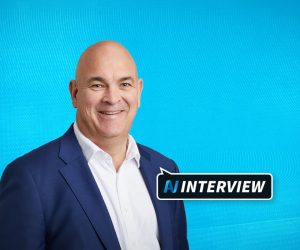
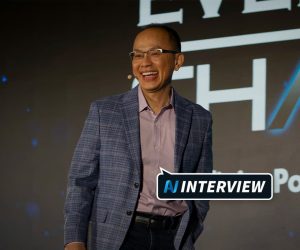
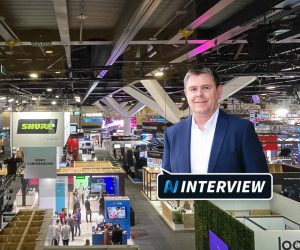
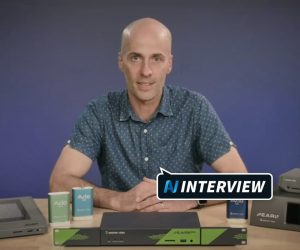
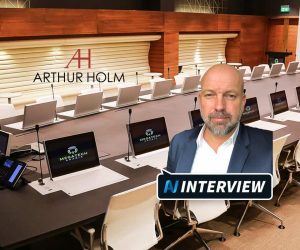


Merci beaucoup